Your Guide to Charging an Electric Car
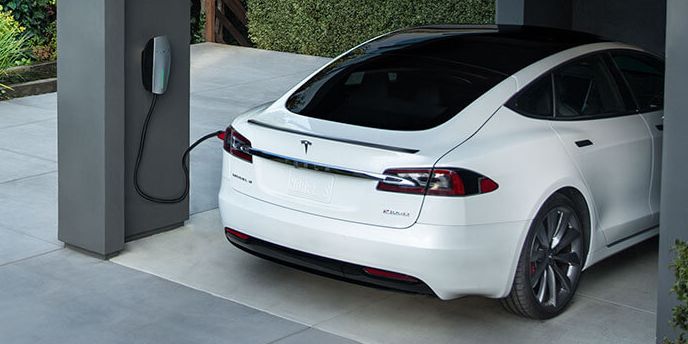
So, you’re considering making the leap to an electric car. Unlike purchasing a vehicle with an internal combustion engine, buying an EV involves some forethought and planning. Particularly when it comes to keeping it running. Whereas gas stations are a dime-a-dozen, the infrastructure for electric chargers is still a bit shaky. Don’t let this scare you, though, as there are a lot of different options available to ensure you’re easily able to charge your electric car.
One of the best decisions you can make before purchasing an EV is to have a charger installed where you live. That’s certainly easier if you own your home, but there are plenty of hoops to jump through to make it happen (permits, contractors, fees). To simplify the process, some automakers incentivize this process, as do a number of state and local governments. If you happen to rent the place you call home, then it never hurts to ask your landlord about the possibility of installing an electric car charger.
MORGAN SEGAL
EV Charging Levels and Charging at Home
There are three main classifications of EV charging, and the one you’ll want to use depends on how far you’re going and how much time you have. It’s also important to remember charging an EV is unlike refueling a gasoline-powered car, in that you’ll almost never wait until the battery approaches empty before you plug in. If you charge at home, it’s easy to plug in at the end of each day and recharge overnight. The same is largely true during the day if you’re able to charge at work. Longer road trips require a different approach because you have less time to work with.
Level 1 charge equipment is typically provided with all new EVs. This type plugs into an ordinary 120V household outlet, making this the most convenient but also the slowest way to charge an electric car. Level 1 chargers add roughly two to four miles of range per hour, with the lower end of that range corresponding to larger, less efficient EVs. This means Level 1 charging can take days, not hours, to fully replenish a depleted battery pack. But charging from empty is far from the norm, so Level 1 can work out just fine if you drive no more than 20 miles or so per day and can plug in every night.
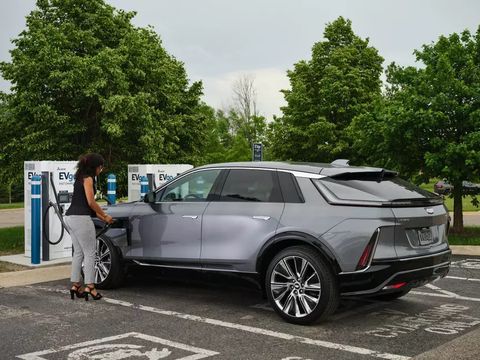
EVgo
You do need to consider a couple of points. First, you should consult an electrician to see if the socket you plan to use is up to it, especially if your home isn’t relatively new. Also, you should never plug your car’s Level 1 charge cord in via an extension cord, because the extra wire length adds resistance that can overheat your home wiring. Also, if you’re unable to plug in regularly, or want to be able to add spontaneous side trips during the day or on weekends, you may find that this setup charges at a rate that’s too slow for your liking.
To satiate your need for charging speed, you’re going to want to look into stepping up to Level 2 home charging, which can support up to 240 volts at triple (and in some cases quadruple) the amperage of Level 1. That makes most Level 2 setups six to eight times faster than Level 1, which equates to between 12 and 32 miles of range added per hour of charging, with the more efficient EVs toward the higher end of that range. With Level 2, you can add a significant amount of range to most EVs in a couple of hours, and it makes full overnight top-ups a breeze even if you happened to drive more miles than usual, skipped charging for a couple of days, or programmed your car to delay charging until the wee hours when electricity rates can plummet.

Marc UrbanoCar and Driver
Level 2 is fairly attainable, especially if you are a homeowner. Some of the supplied cords that come with EVs have swappable ends that feature 240V plugs, but if the cord that comes with the EV you’re considering doesn’t have such a feature, you can purchase standalone Level 2 home charge equipment. Either way, you’ll need a 220–240V outlet that’s connected to a dedicated circuit breaker. A consultation with an electrician is necessary to add such a circuit and make sure your panel is up to it. There are a few notable plug options, but the best and most common is called a NEMA 14-50. This is the same outlet RV parks provide for Class A motorhomes, so you might be in a plug-and-play situation if you’ve already had your garage wired up to support such an RV.
But Level 2 isn’t just found at home. It’s the predominant type found in public spaces, workplaces, and certain shopping malls. Also, the cord-end that you plug into the car looks the same as home Level 1 and Level 2 equipment. You can add a significant chunk of range if you plug in while you’re having dinner-and-a-movie with a friend or significant other, but they are not intended for a full fill from near-empty, mainly because they’re generally not located where people spend many hours in one place.

Brad FickCar and Driver
Fast-Charging
Level 3 chargers are also known as DC fast chargers, and as the name suggests, this equipment can much more rapidly charge your electric car’s battery. Fast charging is particularly helpful on long trips that require intermediate charges to reach a destination because most compatible EVs can take on 100–250 miles or more of range in significantly less than an hour. Level 3 chargers differ from Level 2 charge equipment in that they utilize a different socket on the vehicle side, with extra pins intended to handle additional higher voltage.
There are three types. Tesla Superchargers utilize their own proprietary socket that other cars are—as yet—unable to use here in North America. SAE Combo (also known as CCS or simply Combo) chargers are based on the same socket used by the Level 2 plug, but with an extra pair of large pins grafted on below. CCS-enabled cars typically have a secondary flap the user folds down to expose the socket for these extra pins. Finally, there’s CHAdeMO, the BetaMax of the trio. This socket is mainly found on a few Mitsubishis and the Nissan Leaf, though Nissan’s future products will use the CCS interface going forward.
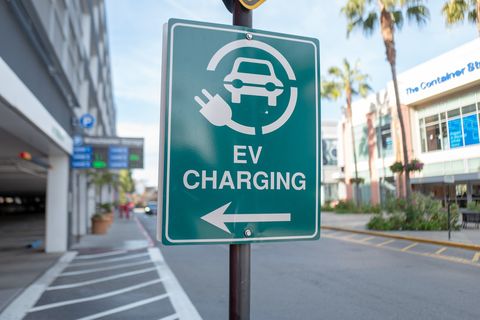
Smith Collection/GadoGetty Images
The rate of charge is measured in kilowatts (kW), which currently range from a low of 50 kW to a high of 350 kW depending on the specific charger. The fast-charge capability of the car itself matters, too. A car that has a maximum DC Fast charge rate of 50 kW will gain nothing by plugging into a 350 kW station, and will instead take up a spot that a car with faster-charging capability could use.
EV owners will see a noticeable dip in the charge rate once their car’s battery reaches approximately 80 percent capacity. In practical terms, an 80 or 90 percent charge is more than enough to get you down the road to the next stop. But this is also done to prevent damaging the battery pack by way of overcharging or overheating it. Think of it like pouring water into a glass. You can dump in a lot at first, but you generally slow the flow as the glass approaches full and dribble it in near the end, otherwise, you run the risk the water may overflow.
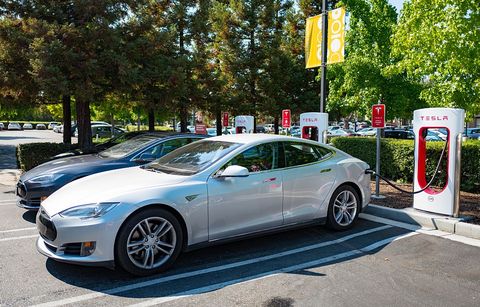
Smith Collection/GadoGetty Images
Fast-Charging Networks
Tesla’s Supercharger network is made up of Level 3 chargers, which the company strategically places around the country. The sheer number of Supercharger locations is high because the network has been built out over some 10 years. This and the fact that its chargers are reliably in working order make Tesla’s electric car charging infrastructure one of the best currently available. For now, access to the Supercharger network in the United States is limited strictly to Tesla’s own vehicles, but it is possible that might change.
For everyone else (including Tesla drivers), there are several charge networks available to the public, such as ChargePoint, Electrify America, EVGo, and others. These networks are generally newer and less extensive, so we recommend joining as many as you can in order to increase your odds of finding an available and functioning station on your travels. It’s also a good idea to download each network’s app on your phone, have an active account, and keep a physical charge card with you.
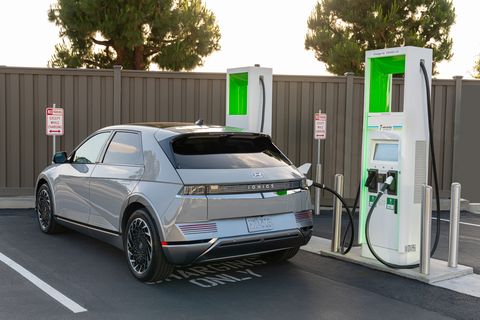
Electrify America
Some automakers are also beginning to implement plug and charge, which is a way of accessing multiple networks for charging your electric car. The Mercedes EQS battery-electric sedan, for instance, can consolidate several networks under a single user account. It also includes a plug-and-charge function when using participating chargers. This allows you to simply plug your EQS in without having to interact with the charger’s app or physical charge card.
Charging on the go is further simplified by way of many electric cars’ in-dash navigation systems, which will typically suggest charging locations to stop at along your route should your EV need a charge in order to reach the final destination. That said, we recommend picking several alternate charging stations in case your range depletes quicker than expected or in the event a chosen charging station’s charger is already in use or out of order.
The Cost of Charging an Electric Car
Though the price of electricity varies by location, charging an electric car at home ought to cost notably less than filling your gas-powered car’s tank with an equivalent amount of gas. In some areas, your electricity provider may incentivize charging by lowering rates during off-peak hours. Generally, these lower rates take effect late in the evening and last through the early morning. Many electric cars allow you to schedule your daily at-home charging times, which ought to ensure your EV is charging during these off-peak hours. Prepare to spend a good deal more money on charging if you regularly rely on charging networks to recharge your electric car.
Those charging at home may want to invest in solar panels that feed a series of batteries called an energy storage system, an example of which is Tesla’s Powerwall. These systems collect energy from the sun during the day and store it for later uses, such as charging an electric car. In some areas, any excess power collected can be sold back to the local utility company. Be warned, energy storage systems can currently be prohibitively expensive.
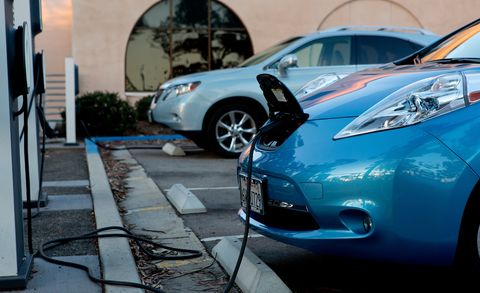
ullstein bild/Getty ImagesCar and Driver
EV Charging Etiquette
If you are a recent electric car convert, then you ought to be aware of a few of the simple etiquette guidelines that come with EV ownership. For instance, when using a charger in a public parking area, it’s best to keep tabs on your electric car’s state of charge. Once its battery is at full capacity, it’s common courtesy to move your car—even if that means hoofing it back to the charging station well before you’re ready to leave the area—so other drivers can charge their EVs. In fact, some charging networks will penalize you for keeping your car plugged into the charger after its battery reaches full capacity.
Additionally, it’s a good idea to make sure your electric car is correctly plugged in and actively charging before walking away. Faults sometimes occur within a minute or two of plugging in.
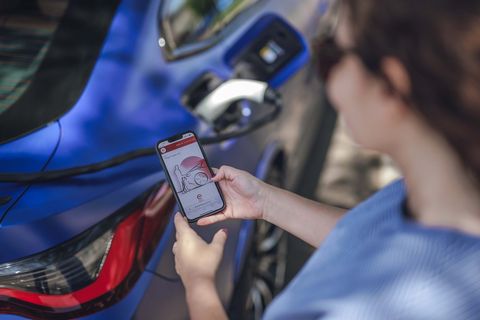
Michael SimariCar and Driver
Once your EV’s done charging, place the charger handle back on the receptacle and neatly coil the cable. These components take a beating in everyday use and keeping them in good working order will pay dividends for you and other EV drivers alike. These cables are also a tripping hazard, so keeping them off the ground is always a smart idea. If you encounter a faulty charger, then your best bet is to notify the network of this issue so it can be fixed.
Charging an electric car may seem complex, but with the exception of the additional time it takes to get your car to its full energy capacity, it’s generally no harder than fueling up a gas- or diesel-powered vehicle. Even better, those with an at-home charger will find charging their electric car is just as easy as charging any mobile device. Just plug it in overnight, and wake up with it ready to go.






